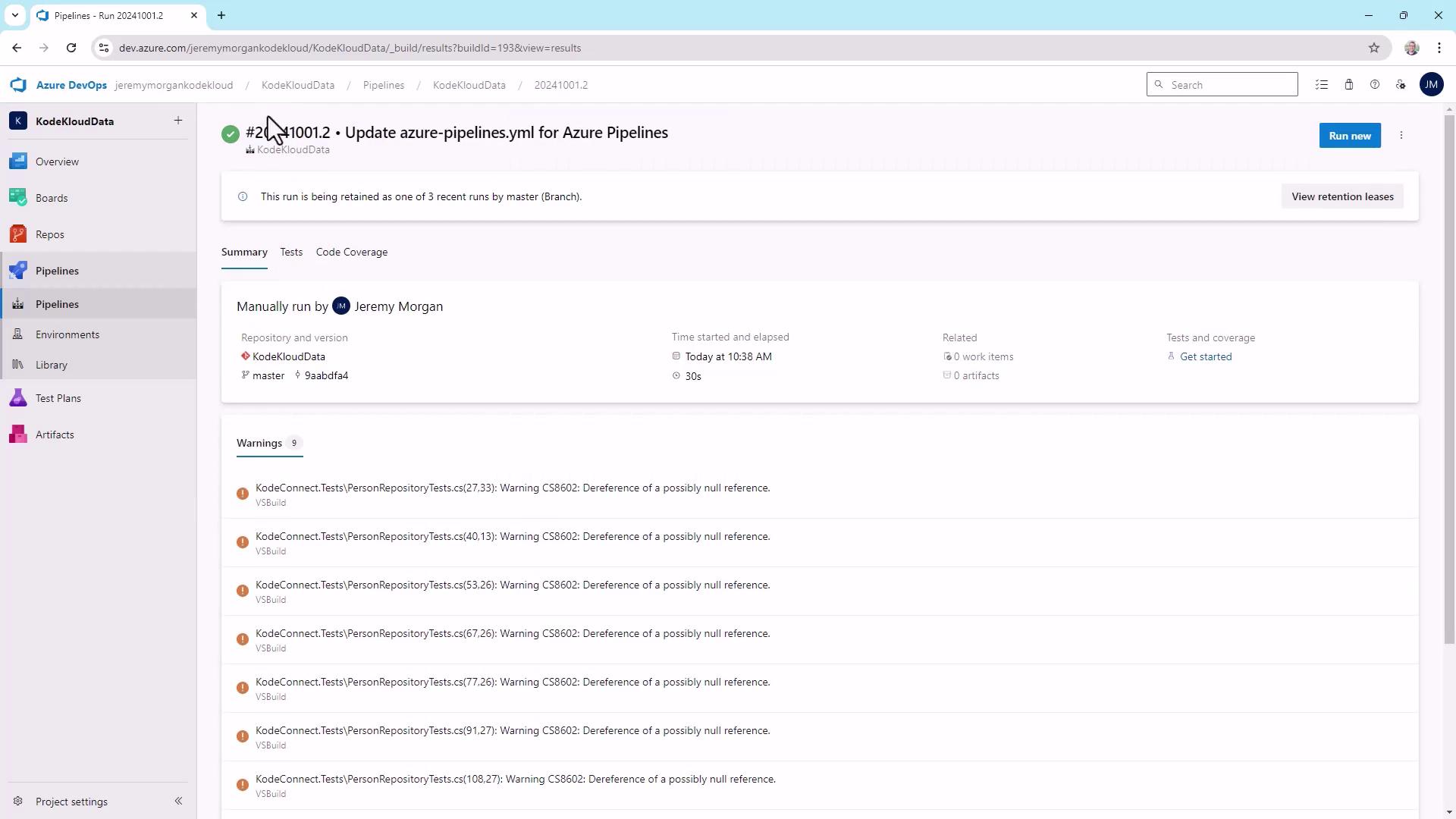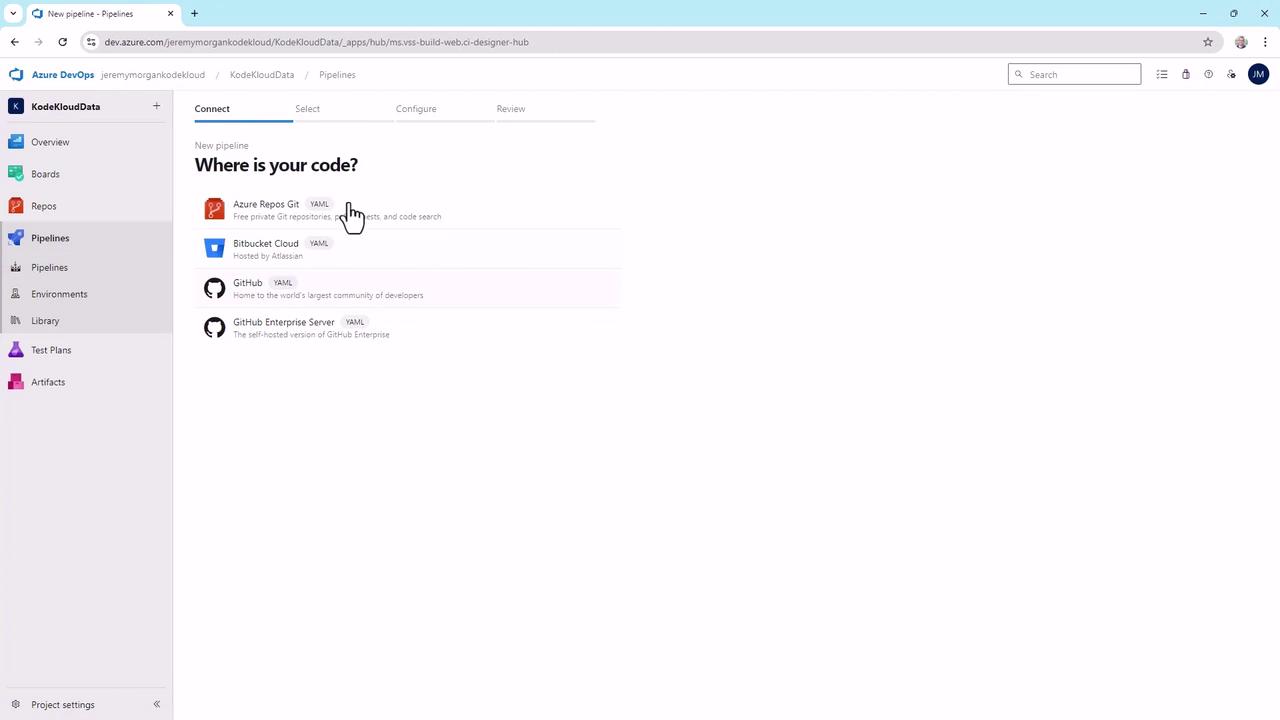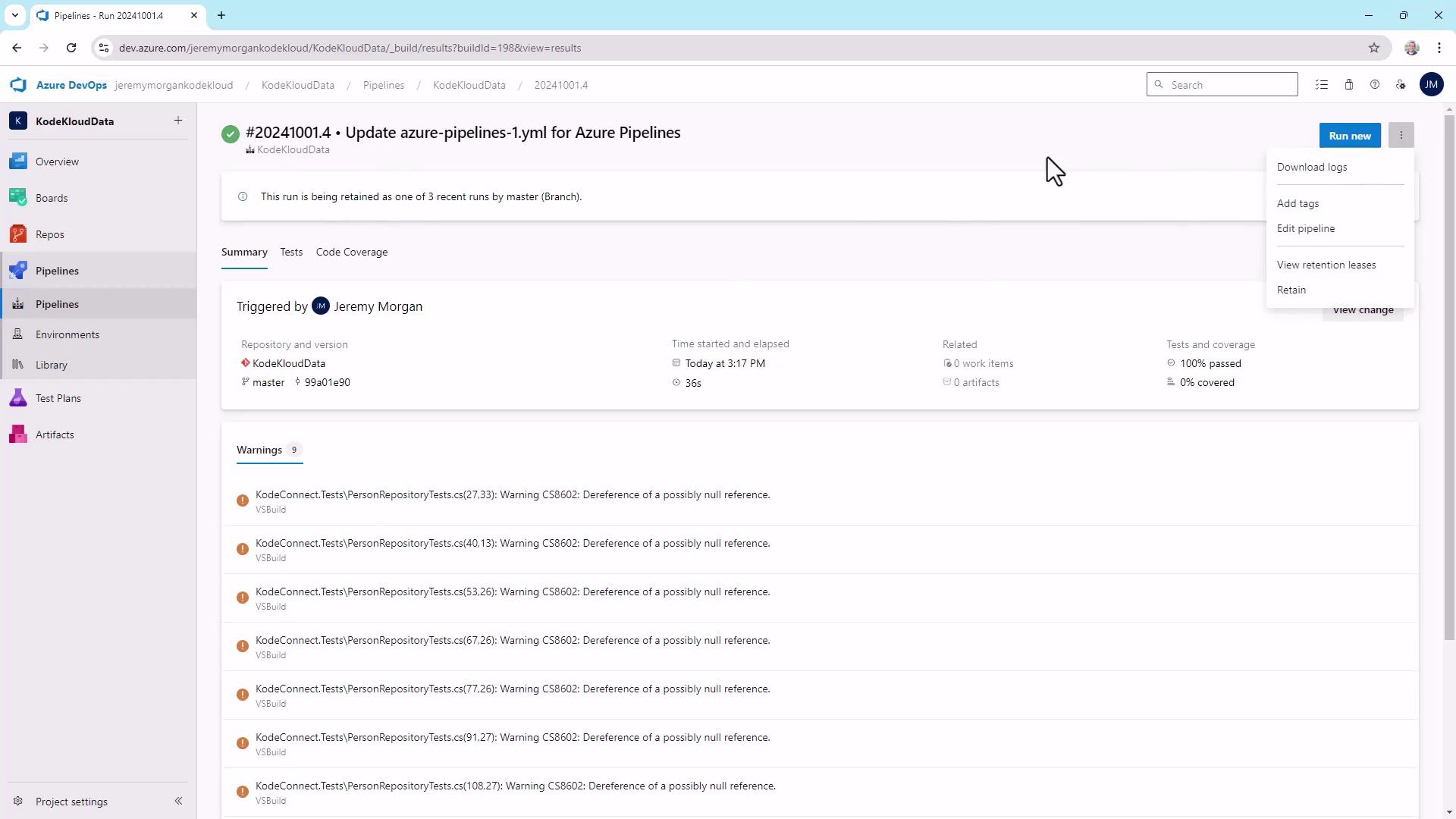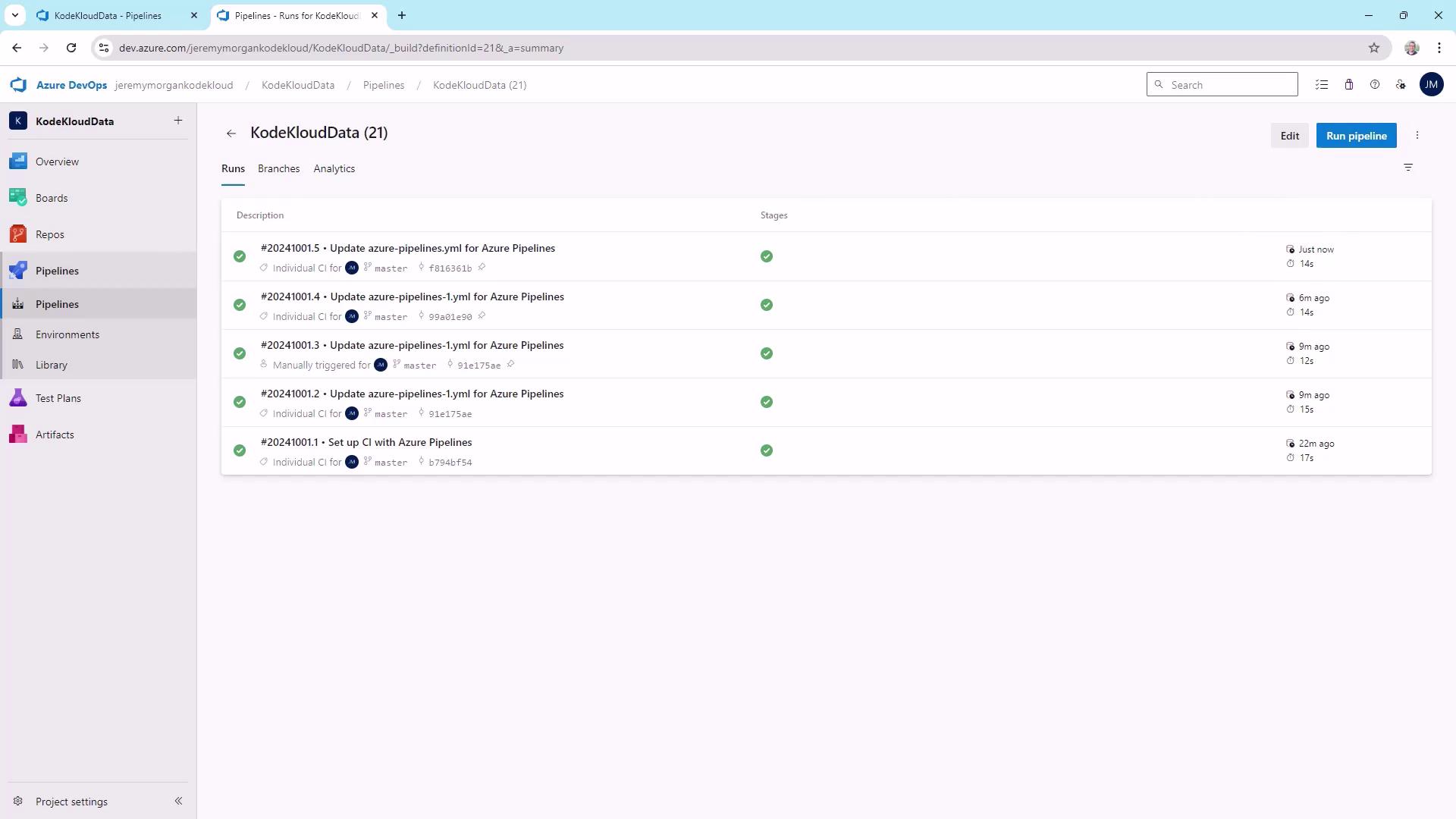AZ-400: Designing and Implementing Microsoft DevOps Solutions
Implementing an Orchestration Automation Solution
YAML Templates
Azure DevOps pipelines use YAML to define build and release workflows in a human- and machine-readable format. In this guide, we'll explore YAML essentials, step through an ASP.NET pipeline example, and demonstrate how to leverage templates for reusable CI/CD components.
Why YAML?
YAML is both concise and clear, making it ideal for version-controlled CI/CD definitions. Learn more at the YAML Official Site.
Example: ASP.NET CI/CD Pipeline
Use the following ASP.NET pipeline to build, test, and package your web application. For full task details, see the Azure DevOps ASP.NET docs.
trigger:
- master
pool:
vmImage: 'windows-latest'
name: 'Default'
variables:
solution: '**/*.sln'
buildPlatform: 'Any CPU'
buildConfiguration: 'Release'
steps:
- task: NuGetToolInstaller@1
- task: NuGetCommand@2
inputs:
restoreSolution: '$(solution)'
- task: VSBuild@1
inputs:
solution: '$(solution)'
msbuildArgs: >-
/p:DeployOnBuild=true
/p:WebPublishMethod=Package
/p:PackageAsSingleFile=true
/p:SkipInvalidConfigurations=true
/p:PackageLocation="$(build.artifactStagingDirectory)\$(Build.BuildId).zip"
platform: '$(buildPlatform)'
configuration: '$(buildConfiguration)'
- task: VSTest@2
inputs:
platform: '$(buildPlatform)'
configuration: '$(buildConfiguration)'
Starter Pipeline
Begin with a minimal YAML pipeline and customize it for your project:
trigger:
- master
pool:
vmImage: 'ubuntu-latest'
name: 'Default'
steps:
- script: echo Hello, world!
displayName: 'Run a one-line script'
- script: |
echo Add other tasks to build, test, and deploy your project.
echo See https://aka.ms/yaml
displayName: 'Run a multi-line script'
Key elements:
- trigger: Events that kick off the pipeline.
- pool: Agent selection (e.g.,
ubuntu-latest). - steps: Tasks or scripts to execute in sequence.
Viewing a Pipeline Run
A typical Azure DevOps pipeline run reveals build warnings, repository info, branch, and elapsed time:

Creating a New Pipeline
When you create a pipeline, select your source—Azure Repos Git, Bitbucket Cloud, GitHub, or GitHub Enterprise—and choose the Starter Pipeline for IntelliSense support:

The default YAML appears:
trigger:
- master
pool:
vmImage: 'ubuntu-latest'
name: 'Default'
steps:
- script: echo Hello, world!
displayName: 'Run a one-line script'
- script: |
echo Add other tasks to build, test, and deploy your project.
echo See https://aka.ms/yaml
displayName: 'Run a multi-line script'
Validate and run to see output:
Starting: Run a one-line script
> echo Hello, world!
Hello, world!
YAML Structure Basics
YAML relies on three core constructs: key–value pairs, lists, and nested mappings. Use indentation for hierarchy and avoid tabs.
| Syntax Type | Description | Example |
|---|---|---|
| Key–value pair | Maps a key to a single value | trigger: [master] |
| List | Defines an ordered sequence | fruits: [Apple, Banana, Cherry] |
| Nested mapping | Embeds mappings under a parent key | pool:\n vmImage: ubuntu-latest\n name: Default |
Examples:
Key–value pair:
trigger:
- master
List:
fruits:
- Apple
- Banana
- Cherry
Nested mapping:
pool:
vmImage: ubuntu-latest
name: Default
Variables and Overrides
Define pipeline variables at the top and allow runtime overrides:
variables:
solution: '**/*.sln'
buildPlatform: 'Any CPU'
buildConfiguration: 'Release'
pipelineRunnerName: 'DefaultUser'
pipelineRunnerAge: 30
steps:
- script: echo Hello, $(pipelineRunnerName)!
displayName: 'Greet runner'
- script: echo Runner age is $(pipelineRunnerAge)
displayName: 'Show runner age'
Override Variables Carefully
Users can override pipelineRunnerName and pipelineRunnerAge on the Run Pipeline screen. Ensure correct defaults to avoid unexpected behavior.
Best Practices
- Leverage comments to clarify intent.
- Keep pipelines DRY by defining reusable variables and templates.
- Organize common logic into separate files.
Applying Templates
Break out common steps into parameterized or extendable templates.
Example templates:
nuget.yml
steps:
- task: NuGetToolInstaller@1
- task: NuGetCommand@2
inputs:
command: 'restore'
restoreSolution: '$(solution)'
build.yml
steps:
- task: VSBuild@1
inputs:
solution: '$(solution)'
msbuildArgs: >-
/p:DeployOnBuild=true
/p:WebPublishMethod=Package
/p:PackageAsSingleFile=true
/p:SkipInvalidConfigurations=true
/p:PackageLocation="$(build.artifactStagingDirectory)"
platform: '$(buildPlatform)'
configuration: '$(buildConfiguration)'
test.yml
steps:
- task: VSTest@2
inputs:
platform: '$(buildPlatform)'
configuration: '$(buildConfiguration)'
Reference templates in your main pipeline (azure-pipelines.yml):
trigger:
- master
pool:
vmImage: 'ubuntu-latest'
name: 'Default'
variables:
solution: '**/*.sln'
buildPlatform: 'Any CPU'
buildConfiguration: 'Release'
pipelineRunnerName: 'DefaultUser'
pipelineRunnerAge: 30
steps:
- script: echo Hello, $(pipelineRunnerName)!
displayName: 'Greet runner'
- template: 'nuget.yml'
- template: 'build.yml'
- template: 'test.yml'
Build and Test Summaries
After applying templates, review your build results in the pipeline summary:

Monitor recent runs and their status:

Check detailed logs to confirm test success:

Conclusion
Azure DevOps YAML templates enable modular, maintainable CI/CD pipelines. You’ve learned:
- Core YAML syntax and structure
- Defining variables and overrides
- Extracting and reusing templates
- Reviewing build and test outcomes
Experiment with these patterns to streamline your Azure DevOps workflows.
Links and References
- Azure DevOps Pipelines
- YAML Official Site
- Azure DevOps ASP.NET Pipeline Docs
- Azure Pipelines YAML Schema
Watch Video
Watch video content